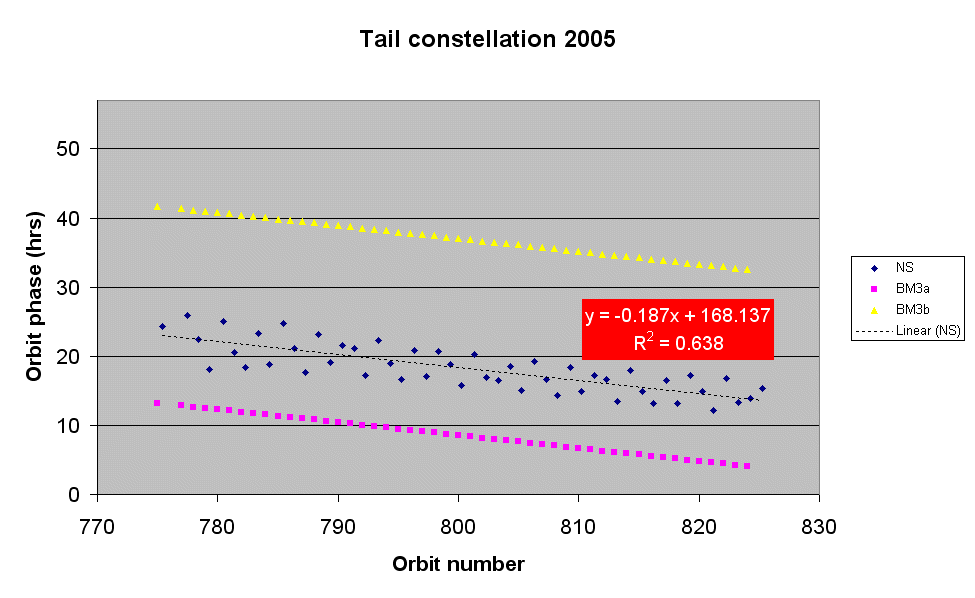BM3 periods in the 2005 tail constellation
This page describes the algorithm used to schedule BM3 periods during
the 2005 tail constellation of the Cluster spacecraft. The basic principle
is the same as that for the 2002 tail
constellation. Thus we place these periods in the lobes, away from both
(a) the perigee/interior cusp region and (b) the tail neutral sheet.
Thus we place one BM3 period in the northern lobe between perigee and
the neutral sheet crossing and one in the southern lobe between the
neutral sheet and the next perigee. This is illustrated in the figure
below, which uses a Bryant plot format to show the locations of the
predicted neutral sheet crossing (s/c 1) and the BM3 periods.

The figure shows that the orbit phase of the Cluster neutral sheet
crossing has a systematic trend towards earlier orbit phases, with some
scatter due to the diurnal motion of the model neutral sheet (driven by
the diurnal motion of the geomagnetic dipole). The correlation coefficient
(R2=0.628) and trendline for a linear fit are given in the figure.
The BM3 periods follow this trendline with one period scheduled 10 hours
before the trendline and the other 28.5 hours (half an orbit) after the first.
This approach yields two BM3 periods per orbit with adequate time margins
to avoid overlap with key targets such as the neutral sheet and the cusp. In
the worst cases, the BM3 periods are scheduled about 5 hours from perigee.
Caveats
In some cases, the algorithm described above leads to a conflict with
WBD operations. In these cases a small offset (of order 1 hour) has been
applied to move the BM3 period away from the WBD operation. Note that it
is always much easier to move the BM3 periods as that is entirely within
the control of Cluster. Whereas the WBD scheduling is heavily constrained
by orbit dynamics and by availability of DSN resources.
The location of BM3 will be varied on orbits 798 to 802 (early September 2005),
where we have the series of long eclipses near apogee. The payload will be switched
off to conserve power for a period during and after these eclipses. The precise
plan will be developed in July 2005 as part of the preparation for
the eclipses.
Last updated 28 June 2005 by
Mike Hapgood
|